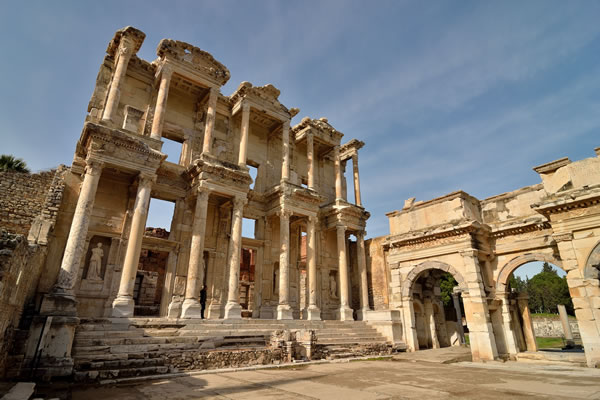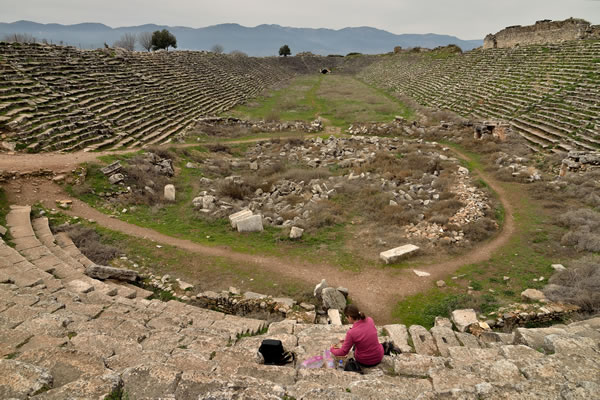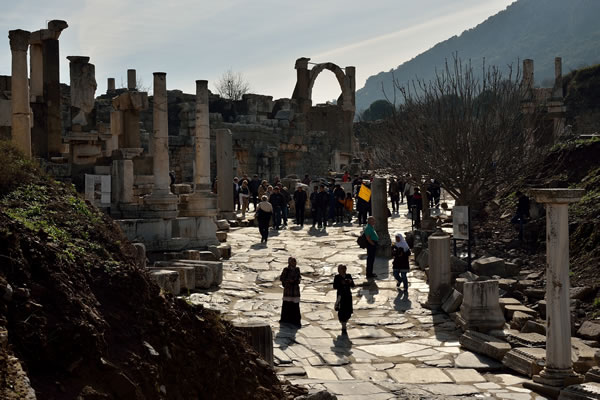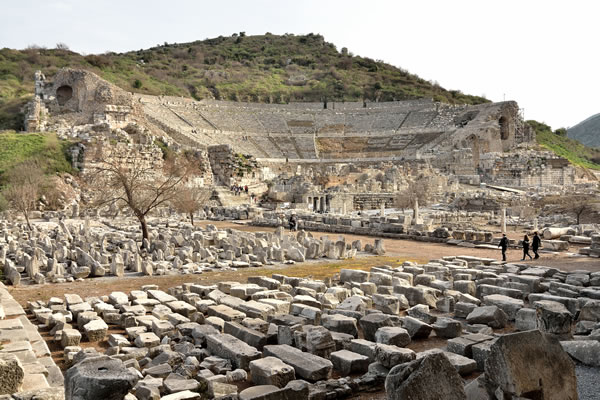English | Dutch |
|
| Pergamum, Ephesus and Afrodisias | |
Konya (Turkey), February 4th 2014
|
|
| |
|
The far west and south of Turkey is home to a number of classical cities, that over the past millennia have fallen into often only a pile of stones, for which you need a lot of imagination to make it a once vibrant city with impressive temples, towering gates, wide boulevards and busy squares. Nevertheless, there are some ruins that are absolutely worth a visit. Much of their former glory days are long over, but even with a little imagination you come to the conclusion that these cities must have been an enormous impressive sight at that time. We decided to visit three classical cities in this part of Turkey: Pergamum, Ephesus and Afrodisias.
|
|
 |
|
The Library of Celsus in Ephesus |
|
The most famous ancient city in Turkey is undoubtedly Ephesus, by many archaeologists recognized as the best-preserved classical city in Europe. This is the place in Europe to get a feeling of the greatness of a Greco- Roman city. In the heyday of Ephesus, 250,000 people lived here and the city was the capital of the Roman province of Asia Minor. The ruined city that you nowadays see is still grand and spectacular, and if you further know that in the past 150 years, only 18 % of the city is uncovered by excavations, then you realize just how huge this place was two thousand years ago. But also now, it can be very busy in the city. Ephesus is a popular destinations among tourists, and that means a visit in the tourist season (European summer) is not only very hot, but probably also very busy too. | |
 |
|
The well-preserved stadium of Afrodisias |
|
A classic city much less frequently visited is Afrodisias. This is mainly due to the fact that the ruined city is difficult to visit as a day trip from one of the popular holiday resorts on the coast. That makes the city refreshingly quiet and a great alternative to the busy ruin towns closer to the coast. Afrodisias is a smaller classic town named after Aphrodite, the Greek goddess of love, who had her unique cult image here. Research has shown that there were already settlements on this site 5000 year BC. However, only in the second century BC, Afrodisias grew into a city of format. In the third century BC, Afrodisias became the capital of the Roman province of Caria, by than the population of the city peaked to 15,000 people. A number of buildings in Afrodisias are still well preserved, with the classic stadium, with a capacity of 30,000 spectators, as the absolute highlight.
|
|
 |
|
View on the remainders of the Asclepion of Pergamum |
|
 |
|
The Trajan Temple of Pergamum in the fog |
|
 |
|
Tourists wander on the Curetes Way in Ephesus |
|
 |
|
The theatre of Ephesus with some puzzle pieces left in the foreground |
|
 |
|
Tetrapylon (Monumental Gate) of Afrodiasias |
|